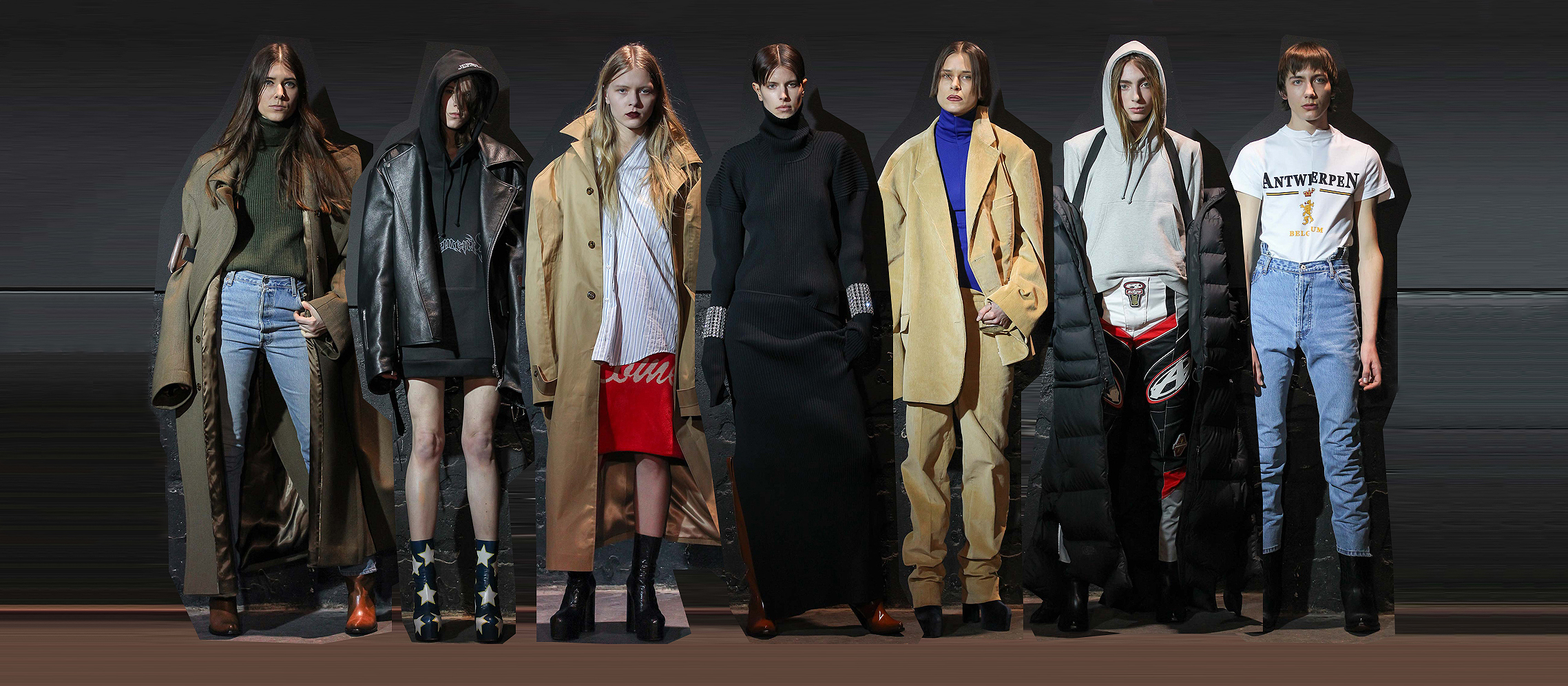Collaborative releases have become somewhat of a recurring seasonal event, not only for new brands using collaboration as a way to leverage the audience of their already-popular mainstay contemporaries, but also for older brands looking to stay relevant by tapping younger brands for co-branded releases.
Palace and adidas working together is an example of a symbiotic collaborative relationship, arguably providing a mutually equal benefit, flowing to both brands. Adidas receives the credibility and benefit of working with a very young and immensely popular brand, while Palace receives the benefit of instant elevation and wider exposure by collaborating with one of the world’s most visible companies.
Famously, the French upstart Vetements, led by designer Demna Gvasalia, announced 18 different collaborative partners for its Spring/Summer 2017 collection. From very common collaborative brands like Levi’s, Dr. Martens and Champion, to more unique choices like Kawasaki, the depth of this collaborative collection perhaps represents a culmination of the true impact collaborative work has had on contemporary streetwear throughout the past decade.
While it might seem relatively easy for Supreme to pick up the phone and call The North Face every season, collaborations often have a significant amount of structuring and negotiations behind the scenes. Derived from my experience structuring countless collaborative agreements, here are some common issues from a legal perspective.
“Who owns the design? Who owns the rights to use the images? Who owns the underlying copyrights?”
Intellectual Property
Perhaps the cornerstone of any collaborative agreement, especially when art or graphic design is involved, is the retention of the underlying intellectual property. Meaning, who owns the design? Who owns the rights to use the images? Who owns the underlying copyrights? If the endeavor is considered a traditional work-for-hire, when a brand “commissions” an artist or designer to create product, the brand would likely intend to own the rights in and to the end result. However, the collaborating artist (or designer) may not always be clear on this, and should carefully read the contract language to look for any provision announcing intellectual property ownership rights and the triggering keywords “work-for-hire.”
In a scenario where a brand is merely “licensing” artwork from an artist or graphic designer to create a collaborative collection, it is important to ensure that the underlying intellectual property rights remain the property of the artist (unless perhaps the artist specifically negotiates to “sell” those rights for a higher fee). Moreover, anytime there are models being used, in a lookbook for example, there should be releases signed by the models precisely indicating the scope of what the images will be used for. This also applies to the photographer.
Ultimately, if a collaborating artist, designer, model, or photographer believes that his or her contribution is being used in a way that oversteps what they had agreed upon, resulting in a potential violation of their intellectual property rights, they should contact an experienced attorney who can further assess the situation.
Payment Structure and Fees
Payment structure and fees are entirely up for negotiation. There are many ways to allocate the financial aspects of collaboration. The issues to consider would be: who pays for expenses and costs? Is there a flat fee payment to the collaborating artist/designer/brand? Is there a sales royalty? Profit share? Auditing rights?
This is all very fluid and often depends on other issues such as ownership of the key designs, intricacy of the work, and leverage of each brand. For example, when two brands collaborate, one is often in a position of power to dictate the material terms.

Photographer: Jiro Konami
“Pay close attention to any limitations set on distribution by your collaborative partners because you don’t want to cause any friction with any important accounts or key retailers who would otherwise be expecting to receive your product.”
Product Distribution
Choosing which accounts receive the collaborative product is also an area up for discussion. When Supreme collaborates with other brands, for example, typically the product is exclusive only to Supreme. However, recently with Nike and Stone Island, we saw collaborative product available at both sides. Similarly, Vans’s collaborative products might only be available to Vault accounts, or the Vans DQM General Store, etc.
Pay close attention to any limitations set on distribution by your collaborative partners because you don’t want to cause any friction with any important accounts or key retailers who would otherwise be expecting to receive your product. Similarly, you will want to pay attention to term length and territory restrictions.
Jeff Gluck will be providing useful information and advice on the legal areas of fashion over at Mastered, while you can also head over to his website for more details about his work.
The materials presented are for informational purposes only and not for the purpose of providing legal advice.

